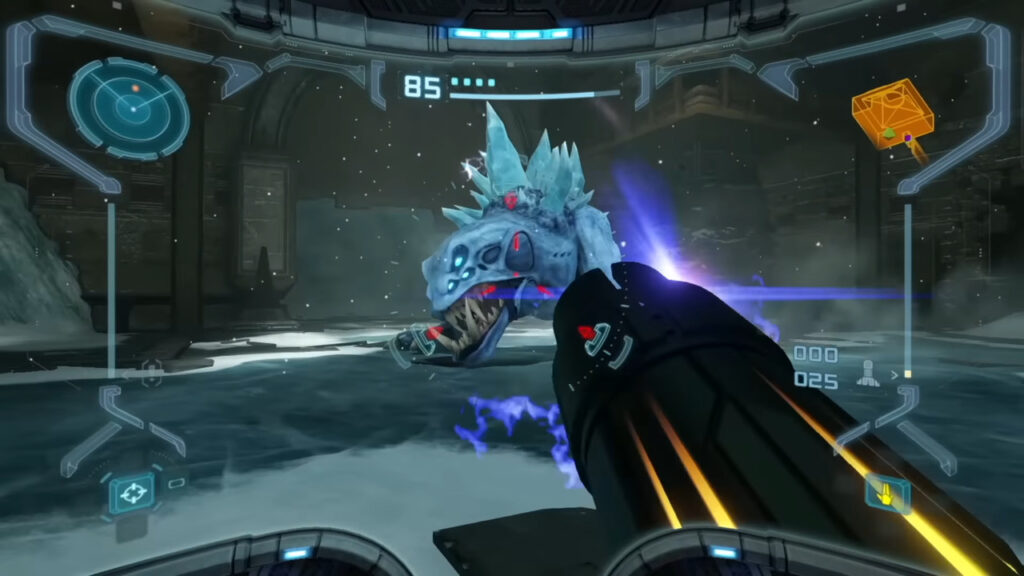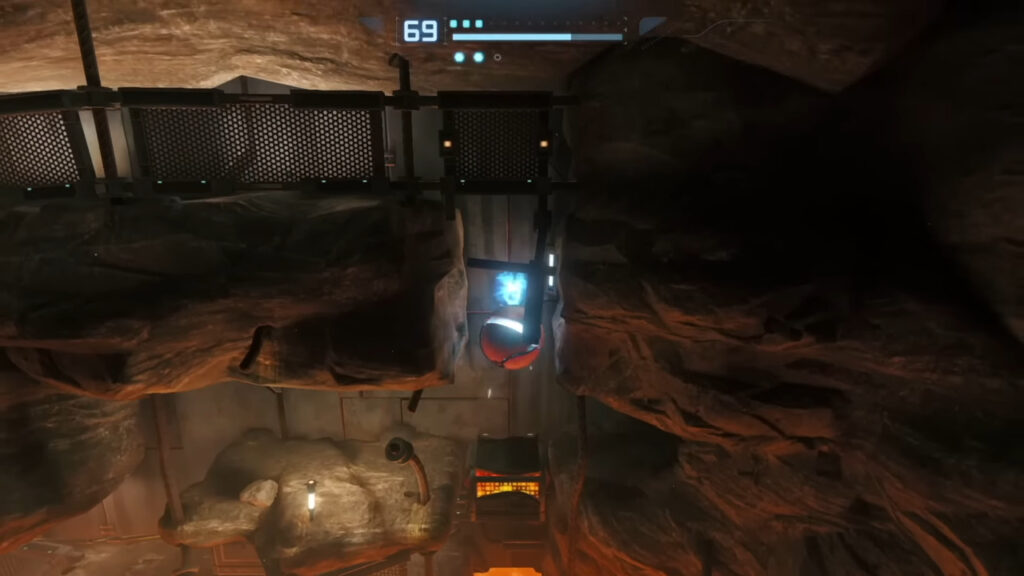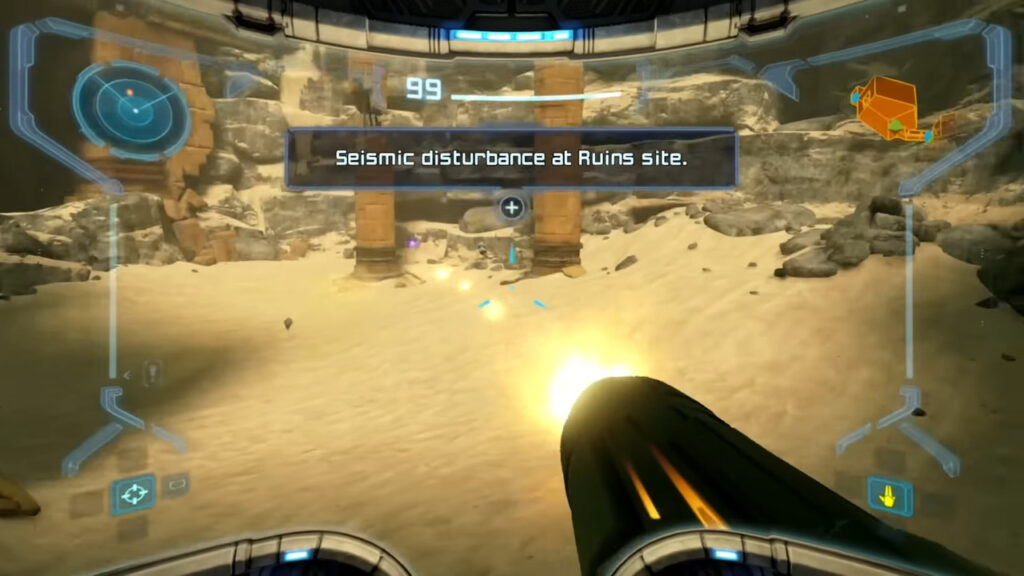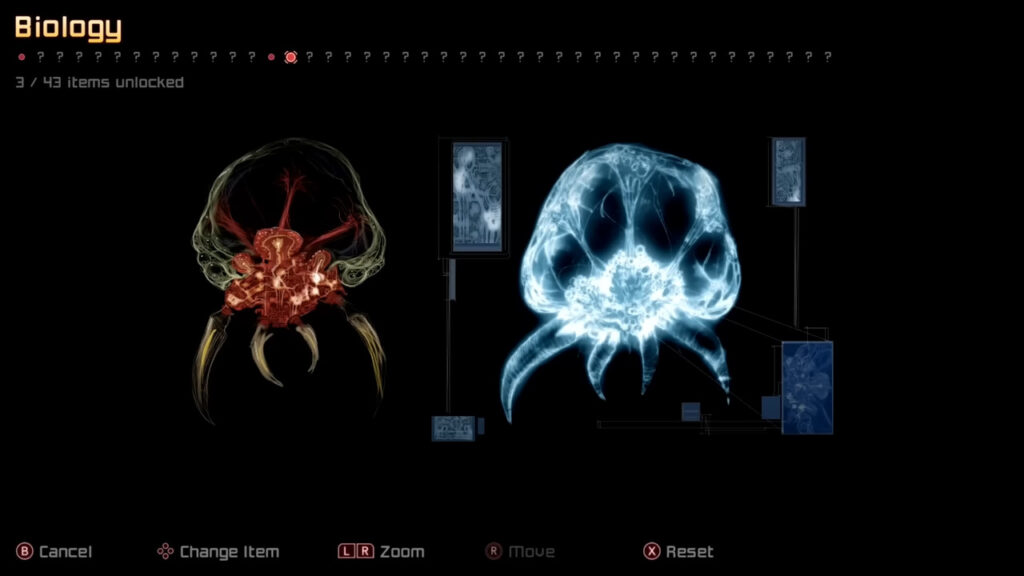
Developer: Retro Studios
Publisher: Nintendo
Platform: Switch
Tested On: Switch
Metroid Prime Remastered – Review
Ever since Metroid Prime 4 was announced back in 2017, fans have eagerly been waiting to return to Samus Aran’s first-person adventures. We did get the excellent Metroid Dread in 2021, but the sideways platforming action hits differently than looking through the visor of our heroine’s helmet as we’re blasting space pirates. It’s not unreasonable that people were hoping for some kind of news about Prime 4 during the February 2023 Nintendo Direct. While the game wasn’t even mentioned, Nintendo did throw fans a bone in the form of the surprise reveal (and release) of Metroid Prime Remastered, an HD remake of the GameCube classic from 2002. The new release begs two questions: does Metroid Prime still hold up after two decades and is there enough here for existing fans to double-dip if they already have the game?
Story
Set between the events of the original Metroid and Metroid II: The Return of Samus (both of which happen to be included as virtual console titles with a Switch Online subscription), Metroid Prime Remastered takes Samus Aran to the Orpheon, a space pirate frigate where she finds and defeats a parasite queen. The battle with this enormous creature causes the ship to initiate its self-destruct sequence. During her escape, she encounters a cybernetic version of her arch-rival Ridley, known as Meta Ridley. Barely escaping, and with her suit malfunctioning, Samus follows Meta Ridley to the planet Tallon IV, which was formerly inhabited by the Chozo race. It’s here that she discovers that the Chozo have been wiped out by the “great poison” Phazon, a substance used by the space pirates in experiments. As if that wasn’t enough, the planet also houses the titular Metroid Prime, a mutated Metroid that acts as the guardian for the Phazon source. Of course, it’s up to our bounty hunter heroine to deal with this smorgasbord of threats to the galaxy. There is a lot of lore here, but the story itself isn’t always told very clearly. Fortunately, anyone looking to understand all the “historical” details and backstory of the game can scan pretty much everything that Samus encounters and pore over Metroid Prime’s in-game logbook.
Graphics
As soon as you boot up Metroid Prime Remastered, it becomes clear that the visual revamp works wonders here. We’ve been repeating ourselves about how the Switch’s graphical processing power isn’t up there with the PS5 or Xbox Series X|S but that it’s actually quite a capable device if a game is properly optimized, and this is yet another showcase of this. From small details like condensation forming on the inside of Samus’ helmet in Magmoor Caverns to the overall visual splendor of the different planets, Metroid Prime Remastered is a fantastic-looking game. There are a couple of minor visual issues here and there, such as the doors not looking like they should, which was something one of the original game developers pointed out, but anyone playing through the game for the first time won’t even notice these. Add to this that Metroid Prime Remastered’s visual performance is surprisingly stable in terms of frame rate and resolution, and you’ve got a game that is up there with the best of what the Switch has to offer.
Sound
Just like with the visuals, a lot of care has gone into updating the game’s audio. Back in 2002, there were certain limitations when it came to the storage space on the GameCube’s optical discs, and audio was understandably compressed to fit. This limitation is no longer present and the game’s audio is given a chance to shine. Kenji Yamamoto’s compositions have never sounded better, and with crisper audio effects and voices, Metroid Prime Remastered truly nails its soundscape.
Gameplay
The original Metroid Prime was one of the finest first-person shooters that the GameCube had to offer and this new rendition confirms that the game has aged like fine wine. It’s definitely not an exact replica, as adjustments were made here and there to make the overall experience more palatable for a modern-day audience. We welcome the QoL changes implemented here, as they improve on the foundation of the original rather than take away from what Metroid Prime should be. If you’re returning to the game from either the original or the re-release on the Wii or Wii U, you’ll be happy to know that the game remains as good as ever, although we would have of course preferred a remaster of the trilogy rather than just that first game. If this is your first time playing Metroid Prime, then you’re absolutely in for a treat.
Back in the day, Metroid Prime was revolutionary in that it combined the 2D Metroid games’, well, Metroidvania approach with first-person shooter gameplay. If you’re unfamiliar with the core principles of a Metroidvania, it essentially means that there is a lot of deliberate backtracking involved, as new areas and secrets become accessible when you unlock new abilities or powerups. It’s incredibly satisfying when you revisit an area where you’ve been eyeing up a previously inaccessible pathway in the early game and are finally able to find out what lies behind it. Unlike most other first-person shooters, exploration is a key element here, and this is emphasized even further through the scanning feature, which lets players learn more about the game’s lore by using it. It’s entirely optional too, so if you’re not too fussed about learning about the critters that inhabit Tallon IV, you don’t need to, although the love and care that went into worldbuilding do make this feature worth it.
An updated default control scheme brings Metroid Prime Remastered in line with how most modern first-person shooters play, and customization options are also available. Additionally, optional preset control schemes are present too, including a ‘classic’ mode that allows you to play the game with the same button layout as the original. For a more authentic experience, the game can even be played with a GameCube controller, provided you have the adapter accessory for it. Granted, it does need a little tweaking in the settings and it’s not a 100% match but it’s close enough for anyone wanting to go on a nostalgia trip. This is a fantastic option for purists, but given how smooth the new control scheme feels, we were more than happy with sticking to the default. There’s also the inclusion of motion controls, which is a throwback to Metroid Prime’s re-releases on Wii and Wii U. We did give these a spin but either the Joy-Cons aren’t as responsive here as the Wiimote was back then, or we’re simply misremembering things. It has been a while since we dusted off our Wii U after all.
Combat remains as tight as ever, with a snappy and responsive lock-on feature and the ability to change your loadout on the fly. We did feel like the aforementioned new twin-stick setup was just slightly smoother than the original control scheme, but not to the point where things felt necessarily easier. The game is still very challenging, especially during its many boss battles. Anyone that feels daunted by what Metroid Prime Remastered serves up may be happy to learn that the game also offers a casual difficulty mode this time around. Given that Metroid Prime is a step up in difficulty from what most players have come to expect from Nintendo games, first-timers might want to choose this mode immediately.
Rounding things out is the gallery feature, which has been massively expanded upon from the previous releases of the game. Original artwork has of course been included here, and Metroid Prime Remastered takes full advantage of the higher resolution of modern-day screens, allowing you to ogle concept art in higher detail than ever before. Adding to this is a soundtrack gallery and a 3D model viewer that lets you look at the various enemy critters from every angle. It’s an impressive package, even for a game that is relatively short by today’s standards, clocking in at roughly 15-18 hours. Our only gripe is that Metroid Prime Remastered is a standalone release, as the €39.99 price point seems a bit too high for a twenty-year-old game. Had this been a remaster of the trilogy or had the game debuted at a more palatable price point, this would’ve been an essential addition to any Switch owner’s library. It’s still a recommended purchase, but anyone that owns the original might not get enough out of this to really jump in straight away.
Conclusion
The original Metroid Prime remains one of the most beloved GameCube titles out there, and this remaster expands and improves upon the original, with additional behind-the-scenes content, updated graphics and audio, and a new control scheme. Metroid Prime Remastered is the best way to prepare yourself for the upcoming Metroid Prime 4, whether you’re new to the series or simply returning to the game after two decades. The only real downside here is that Nintendo wanted to have their cake and eat it too: this should have been either a trilogy release or have been released at a cheaper price point, around the €24.99-29.99 range. If you can get past that, you’d be a fool to give this one a miss.
Metroid Prime Remastered - Review,









No Comments